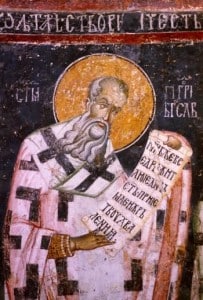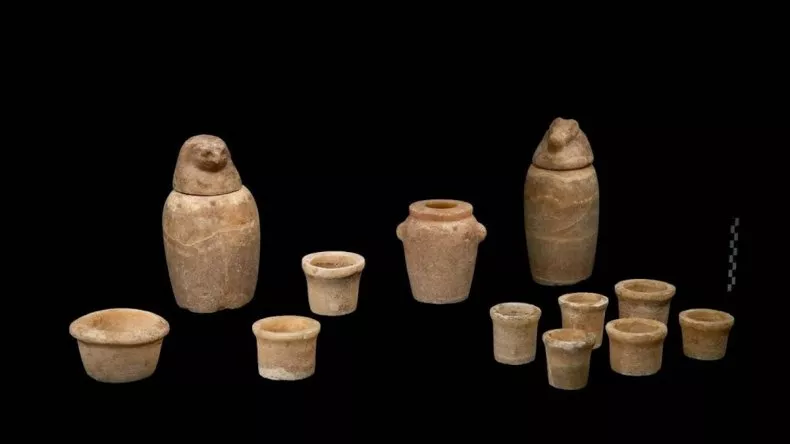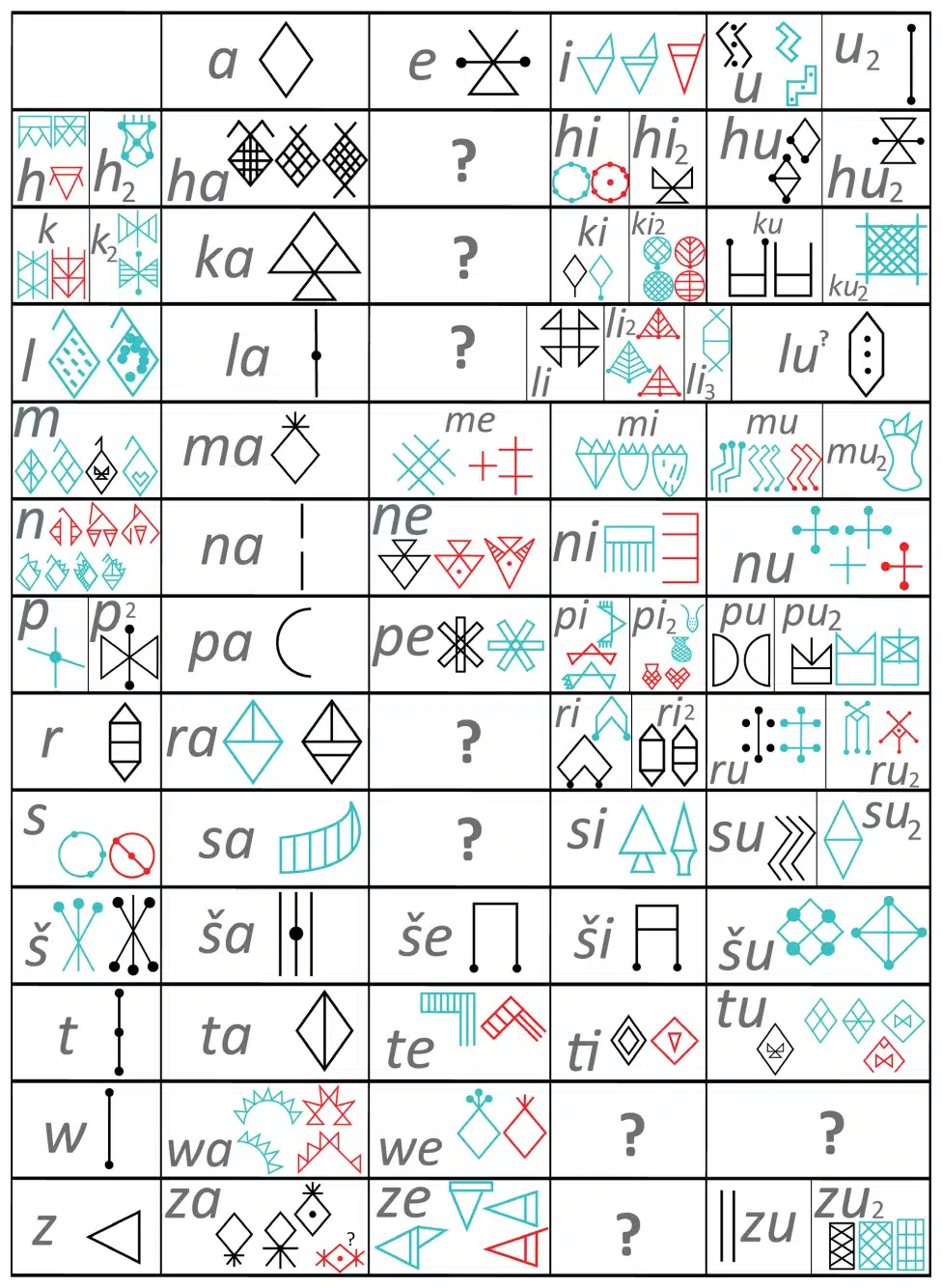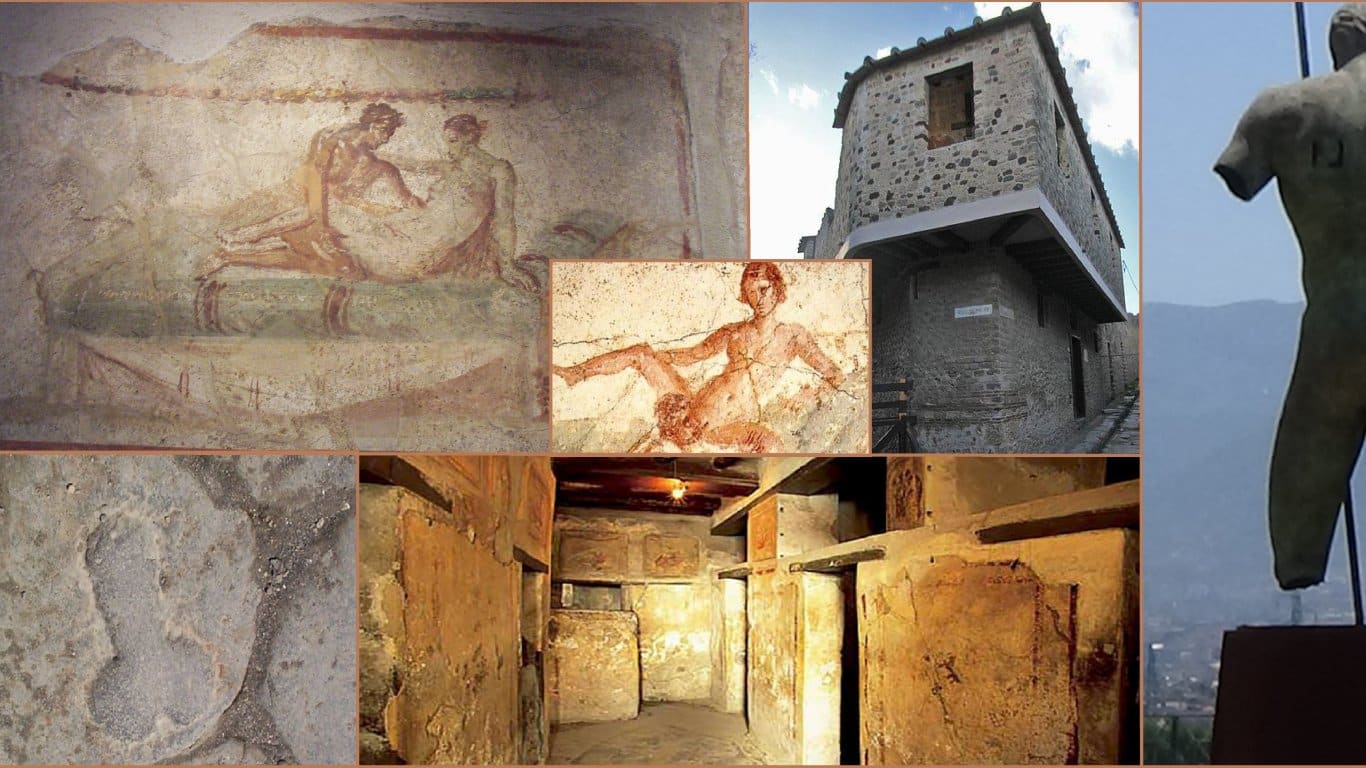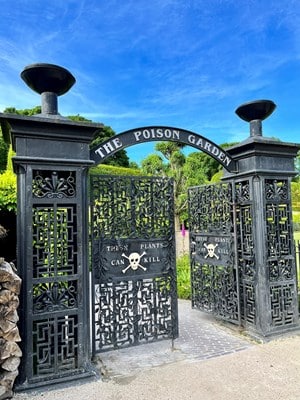Eunomians – 1. Against those who are so skilled in speeches is my word. And to begin from the Scripture: “I am against thee, O pride” (Jer. 50:31) – in teaching, in hearing and in thought. Because there are, yes – there are those whose ears are “tickled” by our words (2 Tim. 4:3) and their tongues itch, and as I see, their hands also itch;[1] to whom “filthy vanity, … the objections of false science” (1 Tim. 6:20) and to useless “talking” (1 Tim. 6:4). This is what Paul calls excess and excessive sophistication in speeches – the herald and guarantor of the “short word” (cf. Rom. 9:28, Is. 10:23), the disciple and teacher of the fishermen. Would that those of whom I speak could strive in the same way in their actions,[2] as their tongue is flexible and skilful, choosing ever lofty and wonderful words. In such a case few, perhaps fewer than now, would indulge in this ridiculous and strange sophistry, and, to put a funny word for something really ridiculous, acrobatics with words.
2. Destroying all the ways of godliness,[3] they are concerned only with “binding” or “loosing” (Dan. 5:12) some matter, like the participants in theatrical demonstrations, presenting not such a struggle as to resulted in a victory according to the laws of actual combat, and such as to catch the eye and draw praise from men, who had never before seen anything like it. Every square must be resounding with their reasonings, at every feast the vexation of their idle chatter, every feast be joyless and filled with gloom, at every funeral the sorrow be consoled with thoughts containing even greater evil, and at the women’s chambers – this bosom of simplicity – to take away the rest, by snatching the flower of shame with a twist of the word.
When it has come to that, and the destruction has become so unstoppable and unbearable, that even the “great mystery” (1 Tim. 3:16) of our faith risks being reduced to some work of artifice, and the father’s “womb” is stirred, and the heart , in the words of the divine Jeremiah, is tormented by feelings (cf. Jer. 4:19), let them show a little patience, receive our word without bitterness, and, holding their tongues, if at all possible, for a moment, give ear to what we are going to say.
In any case, it will not harm you! For my words will either reach the “ears of those who hear” (Sir. 25:12) and bear fruit for your benefit (as the sower sows (Matt. 13:3, etc.) his word in everyone’s soul, but “bringeth forth fruit” (Matt. 13:23) only that which is good and fruitful), or you will laugh at us and withdraw, having obtained new material for objections and blasphemies, and this will bring you new delight. Do not be surprised if you hear something contrary to your custom, which seems strange to you, though with such youthful impudence and boldness (not to offend anyone by saying ignorant and bold) you declare that you know all things, and pretend that you learn everything.
3. Not to everyone – eh, you! – not everyone is given to reason about God.[4] It is not something that is easily acquired and not by the creeps of the earth. I will also add – not at all times, not in front of everyone and not for everything, but one must know when, in front of whom and how much.
Not to everyone, because people who have tested themselves and advanced in reasoning [5] are capable of this, who have purified (or are purifying) their soul and body. It is not even safe for the impure to come into contact with the Pure, as it is for the weak-sighted with the rays of the sun.[6]
When it will be possible? – When we have found rest from the external “mud” and confusion, and the guiding principle in us[7] does not get mixed up with unworthy and wandering images, as the beauty of some scriptures mixed with others that are ugly suffers, or the fragrance of the ointment mixed with mud It is necessary that we have actually reached rest (Ps. 45:11), that we have known God and, choosing the moment, to judge (Ps. 74:3) of the truth of theology.
In front of whom? – To those who look upon this seriously, and do not occupy themselves by the way, so much as to chatter with delight after the horse-races, the shows, the songs, after the indulgence of the bowels, or of anything still below and of it, because part of the pleasure it is for them to argue and excel in the sophistication of their arguments.
Finally, what can be “philosophized about” and to what extent? – For what is stronger for us and to the extent that the listener has an attitude towards it and the ability to perceive it. Otherwise, oppressed and oppressed (let me so express it) by the intractability of difficult teachings, they would lose their original powers, just as those who overdo the force of sounds and quantity of food damage their hearing and body, or, if you will, as those who reach for burdens beyond their strength injure their bodies, or as heavy rains do evil to the soil.
4. I do not at all mean that one should not always remember God. Let those who are always ready and quick in their answers not be in a hurry to oppose us! To remember God is more important even than to breathe, and, it may be said, nothing else should and should not be done. I am one of those who adhere to the word that commands me to “meditate day and night” (Ps. 1:2), “evening and morning and at noon to pray” (Ps. 54:18), to “bless the Lord in at all times” (Ps. 33:2). If necessary, we will also add the words of Moses: “when you sit at home and when you are on the road, when you lie down and when you get up” (Deuteronomy 6:7); whatever else is done so that this remembrance guides us to purity. Therefore I forbid, not this constant remembrance of God, but theology, and not theology at all as impious, but that which is out of place; nor the doctrine of Him at all, but only a doctrine which knows no measure. Honey, be it honey, taken in excess and to the point of straining, causes vomiting (cf. Prov. 25:27). Reasoning like Solomon: “… for everything there is a time” (Eccl. 3:1). Even the beautiful is not beautiful if it is out of place, just as a winter flower is completely untimely, a woman does not suit men’s clothes at all (nor a man women’s), geometry does not work in times of sorrow and tears in times of drinking.[8] ] Are we not going to respect timeliness exactly where it should be emphasized the most?
5. Not in the least, my friends and brethren! I still call you brothers, though you do not behave like brothers. We will not think so, nor, like heated and unrestrained horses (cf. Ps. 31:9), throw our rider, reason, and, loosening the trusty “reins” (Ps. 31:9) of reverence, flee beyond the appointed posts, but we will “philosophize”[9] within our appointed limits, and neither move to Egypt, nor allow ourselves to be dragged to the Assyrians, so that we “sing the Lord’s song in a foreign land” (Ps. 136:4) – we will said in the hearing of every one, be he foreign or ours, hostile or friendly, benevolent or unbenevolent, who will watch us closely, and would wish the spark of evil in us to become a flame, will kindle and fan it, and, however hidden it may be , with his efforts he will raise her to heaven and make her higher than the all-burning flame of Babylon (Dan. 3:22). Unable to derive strength from their own teachings, they seek to obtain it at the expense of our weakness. Therefore, like flies that have settled on a wound, they add, I do not know which more precisely, whether to our failures or to our sins.
No, we will no longer be ignorant of ourselves, nor cease to respect propriety. If it turns out to be impossible to overcome the enmity, at the very least we will agree to speak mystically about the mystical, about the holy – holy, and also not to bring to ungodly ears that which cannot be publicized.[10] We will not show ourselves less worthy than the worshipers of demons and the ministers of hideous lore and practices, ready to shed their blood rather than betray their teachings to the uninitiated. And we will know that in speech and silence, as in clothes, food, laughter and gait, there is a certain propriety. Moreover, among other names and powers in God we worship “word”. And let our love of controversy remain within the ordinary.
6. Why should the harsh judge of our words hear about the birth of God, about [His] creation, about “God from nothing”, about the dissection, division and decomposition? [11] Why do we make the accusers judges? Why do we put the sword into the hands of the enemy? How do you think he will receive our word for all this, and with what thoughts a man who approves of adultery and the corruption of children, who worships the passions, and can imagine nothing that exceeds the body; a man who until recently made gods for himself, distinguished by the most shameful deeds? Is it not material? Or in an outrageous way? Or ignorant? Won’t it be business as usual for him? And will he not turn your theology into a guarantor for his own gods and passions? Because if we use these words for evil, it will be difficult to convince them to “philosophize” with them, as it would behoove us,[12] if they themselves are the inventors of evil (Rom. 1:30), how can refuse the opportunity that is given to them? Here are the consequences of the war between us! That is what those who fight for the Word more diligently than is pleasing to the Word itself come to. They suffer the same fate as madmen who set fire to their own homes, molest their children, or drive away their parents as strangers.
7. Now that we have removed everything extraneous from our word, and sent the “numerous legion” heading for the abyss into the herd of swine (Mark 5:9-13, Luke 8:30-33), let us turn to ourselves and like a statue we polish theology to its true beauty.
First, however, let us discuss this worship of speech and harmful prattle. What is this new infirmity and gluttony? Why, by tying our hands, have we armed the tongue? Don’t we praise hospitality? Do we not value brotherly love, conjugal affection, virginity, care for the poor, psalms, all-night vigils, tears? Do we not exhaust our bodies with fasting (cf. 1 Cor. 9:27)? Do we not ascend in prayer to God? Do we not subject the worse to the better, I mean the “dust of the earth” (Gen. 2:7) – to the spirit, judging rightly of our composition? Do we not make our lives a “care for death”?[13] Do we not make ourselves masters of the passions, remembering the honor from above? Do we not tame the anger that causes us to go beyond ourselves and to go wild? Does not this also apply to humiliating exaltation (cf. Luke 18:14, Ps. 72:8), to foolish sorrow, to unrestrained pleasures, to shameless laughter, to insolent looks, to insatiable hearing, to talk without measure, to the inappropriate thoughts, about all that is of the Evil One (which, according to the Scriptures, brings destruction “through the windows” [that is, through the senses]) – occupied by us and directed against us?
Everything is just the opposite. We give freedom to the passions of others, as kings spare the vanquished, only if they are useful to us and are directed as boldly and “godly” as possible against God, giving a bad occasion also a bad recompense – self-will in exchange for impiety.
8. But, dialectician and chatterbox, I will ask you more, and “you explain to Me” (Job 38:3), as the Prophet through the storm and clouds says to Job. What do you think, are there many abodes of God or one? – No doubt you will say: “Many, not one.” – In that case, must all be fulfilled, or some yes and some not, so that they are empty and created in vain (cf. John 14:2)? – “Obviously everyone, because nothing created by God is in vain.” – And would you say what you think the abode is: peace and glory in the hereafter, reserved for the blessed, or something else? – “Yes, that’s it, it’s nothing else.” – We agree here. Now let us pay attention to the following: Is there, as I think, something that shelters in these cloisters, or is there no such thing? – “There certainly is.” – And what is it? – “There are different ways of life and different choices, which, according to the degree of faith (cf. Rom. 12:6), also lead in different directions, and for this reason we call them “roads”. – But should all paths be followed or only some? – “If it is possible for one person, let it be possible for all. If he can’t go on all of them, let him go on as many as possible.
If that too is impossible, let at least some follow. However, since even this is impossible, as it seems to me, it would be a great thing to follow one.” – You got that right. And when you hear the words that the way is one and narrow (Matt. 7:14), what do you think their meaning is? – “He is one with regard to virtue, because it is one, although it is divided into many kinds. It is narrow because it is difficult to follow and because it is impassable to its multitude of adversaries who have chosen the path of vice.’ – I am of the same opinion.
In that case, my dear friends, since you think that you have found our teaching to be meagre, why have you abandoned all other ways, and rush headlong into that which seems to you to be the way of reason and reasoning, but , as I think, is a path of gossip and nonsense. Let Paul judge you, who, enumerating the gifts, harshly condemns precisely this with the words: “Are they all apostles? Are all prophets?” etc. (1 Cor. 12:29).[14]
9. May you be exalted, may you be above the exalted, may you be, if you will, even above the clouds, you – beholder of the invisible, hearer of “unspoken words” (2 Cor. 12:4), ascended like Elijah (4 Kings 2 :11), honored with an epiphany like Moses (Ex. 2:3, 19:20, 33:18-23), heavenly like Paul (2 Cor.12:2)! But why, in one day, do you also make other saints and ordain them theologians, as if infusing them with learning, and thus make numerous congregations of ignorant scribes? Why do you wrap the weak in cobwebs, luring them that this is supposedly something wise and great? Why do you direct the wasps against the faith?[15] Why do you see the dialecticians set against us multiplying, as the ancient myths fertilized the giants? Why do you heap together like garbage in a pit such men as you find worthless and devoid of manhood, and by flattery make them still more effeminate, thus creating a new litter for dishonor, and reaping their folly without skill?
And are you going to dispute that? Don’t you have another job? Must your tongue necessarily rule, so that you cannot restrain the fruitfulness of speech? There are many other items worthy of your attention. Thither, with advantage to himself, he directed his infirmity.
Struck the silence of Pythagoras,[16] the beans of the Orphics,[17] that unheard-of arrogance which we find in the words “He said,”[18] the ideas of Plato,[19] the transmigrations and detours of our souls,[20] the anamnesis,[ 21] not at all the beautiful erotic ascent to the soul, which passes through the beautiful bodies, [22] the impiety of Epicurus, the atoms and the pleasure unworthy of a philosopher; [23] in Aristotle – the limited doctrine of providence, the artificiality of the word, judgments about the mortality of the soul and the human baseness of his teachings,[24] the arrogance of the Stoa,[25] the greed and ostentatiousness of the Cynics.[26] Smite the “empty” and the “full”,[27] the bratveges for the gods and the sacrifices, for the idols, for the good and for the evil demons; smite the wonders that speak of divination, of the summoning of the gods and souls, of the power of the heavenly luminaries.[28] And if you do not consider all this worthy of discussion, as something insignificant, and about which a lot has already been said, but you want to follow your own path, here too I will indicate to you a wide field for expression. Philosophize about the world (or about the worlds), about matter, about the soul, about good or evil rational natures, about the resurrection, judgment, retribution, about the sufferings of Christ. To succeed in these subjects is not useless, and to make mistakes is not dangerous. About God now we can communicate less, but after time, in a perhaps more perfect way, we will speak about Jesus Christ himself, our Lord, to whom “glory forever and ever” (Rev. 1:6). Amen.
Translation: Prof. Dr. Ivan Hristov
* For the first time, this translation was published in: Grigoriy Nazianski, Pet bogoslovski slova, predav i studiya Ivan Hristov, S.: “GAL-IKO” 1994, pp. 25-33; the text published here has been refined by the translator, and a new edition of the entire book is forthcoming, which is expected to be carried out by “Iztok-Zapad” publishing house (ed. note).
[1] The composition of the five theological words refers to the time July-November 380, when St. Gregory consolidated his position as bishop of Constantinople, after the failure of the intrigues of Maximus Cynicus (De seipso – PG 37, 728-1112; see 56.12-14). During this period (Ibid., col. 1130-1272) many of the heretics went over to the side of Orthodoxy. Along with them, however, those who seek discord and behave defiantly come to the temple. The threat of physical violence was not unrealistic. It was almost reached once.
[2] In the Greek text – “πράξεις”. The active efforts of the believer constitute one of the “paths of piety”, following which a person ascends to God (here – note 3). According to the commentary of St. Maximus the Confessor (Ambigua ad Joannem – PG 91, 1240AB), the elevation of man follows the path of “active wisdom”, “natural contemplation” and “the pious and ineffable initiation into true theological wisdom (theological mystery)”.
[3] True piety consists in the unity of contemplation (θεωρία) and action (πράξεις) – Eliae metropolitae Cretae commentarii in S. Gregorii Nazianzeni orationes – PG 36, 760A.
[4] The purification of the soul from the passions of the body is a necessary precondition for the knowledge of God. In them, like the pagan Platonists, St. Gregory sees the main obstacle to the elevation of reason (see: Orationes 28, 12 – SC 250, 41AB; Orationes 28, 13 – SC 250, 44B; Orationes 30, 6 – SC 250, 112B ).
[5] In the Greek text “θεωρία”. Gregory does not associate man’s finitude solely with his bodily composition. Ignorance is also such a manifestation of the obscurity of human nature (Orationes 30, 20 – col. 129C). Therefore, reaching a certain level in mental contemplation is a condition for knowing God.
[6] Cf. Plato, Phaedo 67b.
[7] By “mud” (ἴλυς) St. Gregory understands the body and corporeality (Eliae metropolitae Cretae commentarii in S. Gregorii Nazianzeni orationes – col. 761CD, cf. Iamblichus, De Mysteriis Aegyptiorum 8, 2).
The “guiding principle” (τὸ ἡγεμονικόν) in man is reason. According to the teachings of the Stoics, the soul is composed of eight parts, chief among which is the rational faculty Stoicorum Veterum Fragmenta 2 fr. 826-849.
[8] “The beautiful is not beautiful…” – a saying widely used at the time and used by St. Clement of Rome in the apocryphal book about the travels of St. Ap. Peter (PG 2, 53B; Eliae metropolitae Cretae commentarii in S. Gregorii Nazianzeni orationes – col. 762A).
“Geometry… while drinking” – cf. Eccl. 22:6.
[9] We should not be surprised that St. Gregory uses the words “philosophy” and “philosophize” also when he speaks of theology. On the one hand, like St. Athanasius of Alexandria and the rest of the Cappadocian fathers, for him the word “philosophy” has a changed content and means above all man’s aspiration to God. On the other hand, as a positive moment in theology in a number of cases, he perceives one or other forms of philosophical thinking. In the dialectic of these forms, which reach their self-denial, the theologian rises to the knowledge of his ignorance in the face of God and is confirmed in the contemplation of His being. At the same time, when he speaks of theology as “philosophy”, St. Gregory challenges pagan Greek culture, showing that its highest product is nothing more than a subordinate and “disappearing” moment in theology. Therefore, I have preferred to keep the translation of the Greek word as “philosophy” instead of rendering it as “wisdom”, placing it in quotation marks to prevent the reader from taking it literally.
[10] This is the so-called “disciplina arcani” (keeping the secret). The inner (“intimate”) life of the early Church and its sacraments were accessible only to the initiated (25, 132).
[11] Cf. Orationes 29, 8 – col. 84C. According to the Arians, the Son is a creature and was brought into being “out of nothing” (ἐξ οὐκ ὄντων). In this way the birth of the Son is thought in time and represented in images borrowed from the visible world.
[12] See here, note 9.
[13] Cf. Plato, Phaedo 67d, 81a.
[14] Without faith, without the assistance of grace and its acceptance, theology becomes a formal technique.
[15] In the autobiographical poem On His Life, St. Gregory applies this image to his opponents at the Second Ecumenical Council (PG 37, 1147A).
[16] Approx. 532 Pythagoras founded in Croton (Southern Italy) a philosophical-religious brotherhood, which became famous for its rituals. According to the testimony of Diogenes Laertius, his disciples, having passed a rigorous three-year examination, spent another five years in silence, being able only to listen to his speeches without seeing him. Only then were they admitted to his dwelling and could see him (DL 8, 10).
[17] The Orphics and Pythagoreans abstained from using beans for religious reasons.
[18] Pythagoras’ authority in the brotherhood was unchallenged. Those who doubted the teaching were answered with these words, which have become proverbial.
[19] Plato identifies ideas as principles of things (see, for example, De Respublica 6, 507b). In his commentary on the given place, Elias of Crete clarifies St. Gregory’s position, pointing out that Christians accept the ideas, thus thinking the creative logos of God, but do not accept their derivation outside of Him as archetypes into which He looks (cf. Plato, Timaeus 30c-31a) when he created the world (Eliae metropolitae Cretae commentarii in S. Gregorii Nazianzeni orationes – col. 764BC).
[20] “Transmigration” (μετενσωμάτωσις) is not a Platonic term (cf. παλιγγενεσία). It occurs in Plotinus (Enneades 2, 9, 6; 4, 3, 9). On the cycle and incarnation of souls in Plato see: De Republica 614b-621b, Phaedo 70c-72e, Phaedrus 249a, Timaeus 42b-c.
[21] “Anamnesis” in Plato – “recalling” by the soul of what it saw in the afterlife, where, before its entry into the body, it has the opportunity to contemplate the “true being”. See Menexenus 80e-86c, Phaedo 72e-77a, Timaeus 41e-42b, Phaedrus 247c-250d.
[22] See: Plato, Symposium 210a-212a. The “erotic” ascent of the soul to the beautiful in itself begins with the desire for beautiful bodies. This aspiration to a bodily union also excludes manhood (cf. Eliae metropolitae Cretae commentarii in S. Gregorii Nazianzeni orationes – col. 765A).
[23] In his ethical teaching, Epicurus considers pleasure (understood as painlessness of the body – ἀπονία and imperturbability of the soul – ἀταραξία) as the highest good for man (DL 10, 131). Along with this, he does not neglect physical pleasures. For the Christian, “enjoyment” is also supreme happiness, but it represents another enjoyment – dispassionate and true: in this life such is the enjoyment of virtue, and in the next the enjoyment of worship (Eliae metropolitae Cretae commentarii in S. Gregorii Nazianzeni orationes – col. 765A).
[24] St. Gregory has in mind the ideas of the treatise On the World attributed to Aristotle, where the industrial action of God weakens until it reaches the earth and is effectively limited to the region of the extralunar world (De mundo 6).
According to Aristotle, insofar as the soul is an embodiment (ἐντελέχεια) of the body, it is inseparable from it (De anima 2, 1 – 412a19-b9). However, this does not apply to the whole soul (3, 5 – 430a14-25).
[25] The Stoic school of philosophy takes its name from the portico in Athens (στοά), where it was founded in the third century BC. According to this teaching, unyielding adherence to “natural law” (“destiny”) leads the sage to a state of dispassion (ἀπάθεια – Stoicorum Veterum Fragmenta 3 fr. 204) and self-sufficiency (αὐτάρκεια – Stoicorum Veterum Fragmenta 3 fr. 276). Hence the pride of the Stoic, his consciousness of not being subject to external circumstances.
[26] The Cynic school of philosophy, like Socrates, renounces the natural-philosophical conception of being and directs the thought of its ultimate foundations to the inner world of man. Unlike Socrates, however, the Cynics present in a very primitive and abstract way the general that is given in thought and constitutes the substantial content of the human subject. Defending the common nature of man, they contrast it with moral norms, conventions in society and obligations to the polis, which they see as artificial restrictions narrowing the freedom of the individual and which they demonstratively do not respect. Diogenes of Sinop (400-325 BC) especially distinguished himself in the practical implementation of this teaching.
[27] The “empty” (τὸ πλῆρες) and the “full” (τὸ κενόν) in the teaching of the atomists are fundamental principles of the world (De generatione et corruptione 325a, Metaphysica 985b6).
[28] According to the view of the ancients, the celestial luminaries predetermined human life. Astrology contradicts the Christian understanding of human free will.



